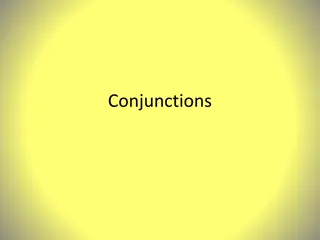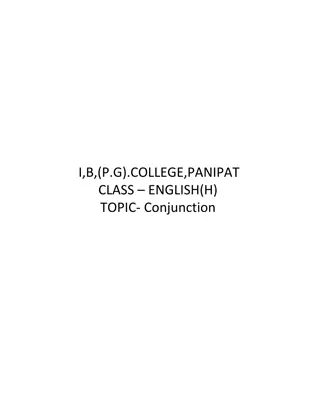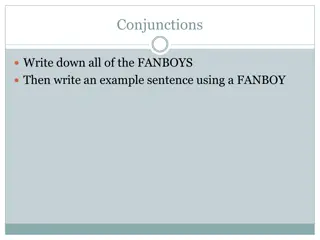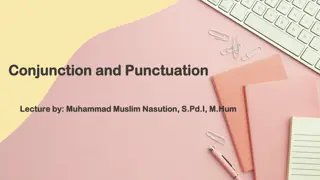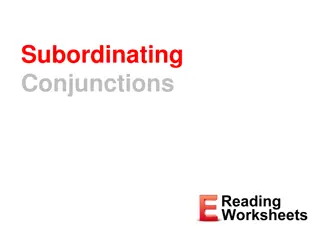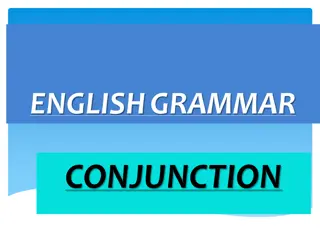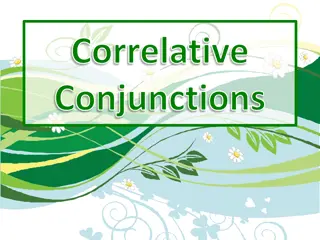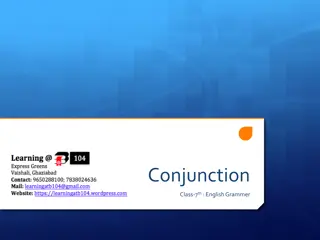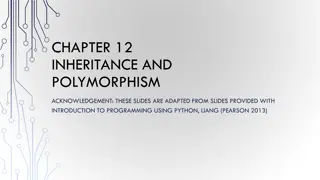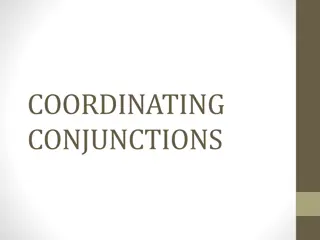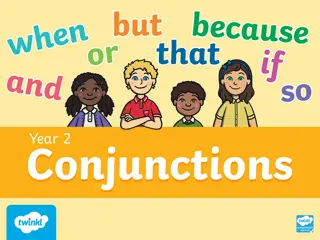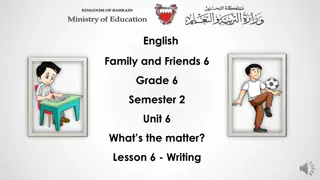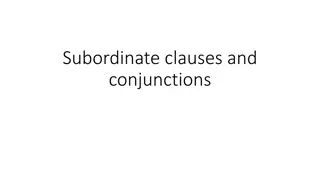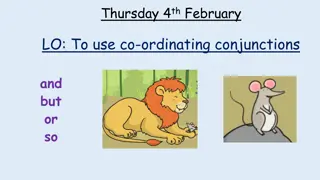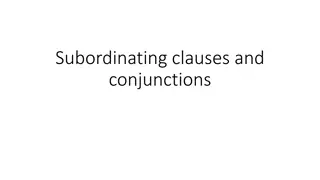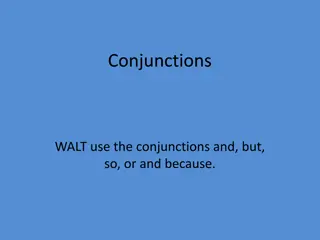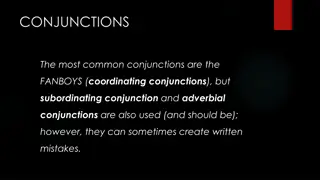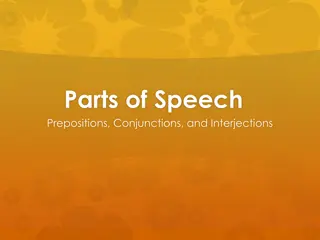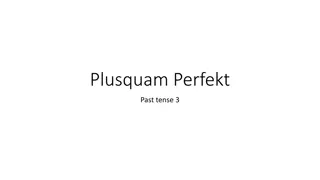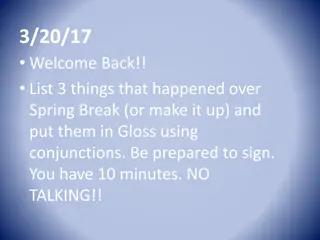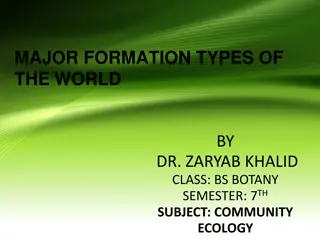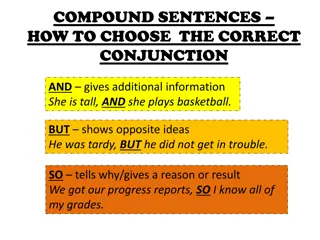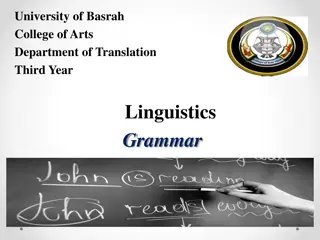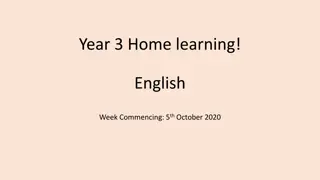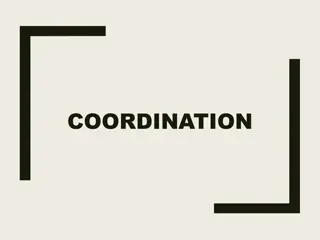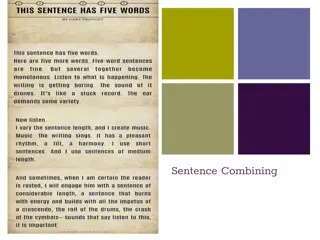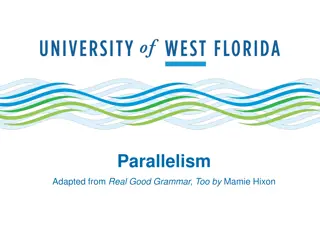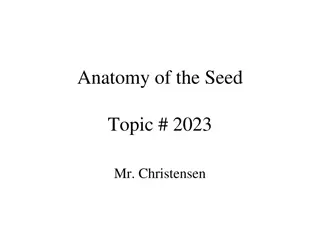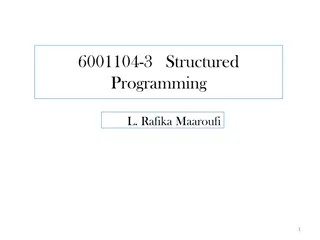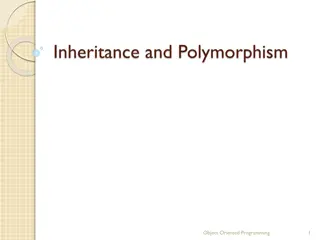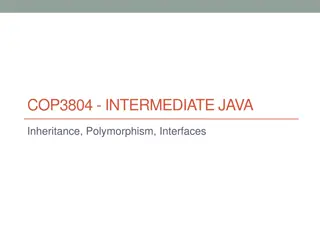Major Subclasses of Conjunctions and their Functions
There are two major subclasses of conjunctions: Coordinating Conjunctions and Subordinating Conjunctions. English coordinating conjunctions have different uses such as consequence, chronological sequence, contrast, concession, condition, and addition. These conjunctions play a vital role in connecting ideas and enhancing the flow of sentences in English grammar.
Download Presentation

Please find below an Image/Link to download the presentation.
The content on the website is provided AS IS for your information and personal use only. It may not be sold, licensed, or shared on other websites without obtaining consent from the author. Download presentation by click this link. If you encounter any issues during the download, it is possible that the publisher has removed the file from their server.
E N D
Presentation Transcript
How many major subclasses are there of conjunctions?
There are two major subclasses of conjunctions: 1. Coordinating Conjunctions 2. Subordinating Conjunctions
ENGLISH COORDINATING CONJUNCTIONS English has three simple coordinating conjunctions: AND BUT OR And three correlative coordinators: BOTH AND EITHER OR NEITHER .. NOR
The coordinating conjunction AND denotes a number of meanings or relationships: 1. Consequence / result (cause and effect) She quarreled with her boss, resigned and left the country. It rained heavily and the streets were flooded. 2. Chronological sequence We fixed the car and went to the shops. He finished his work and visited his uncle.
3. Contrast (meaning but) / The teacher is worried and the students are happy. Ali is clever and his brother is lazy. / 4. Concession (meaning but) We tried our best and couldn t save the child. He had lived for ten long years penniless and had never complained.
5. Condition (if) Buy this car , and save your money. Respect your neighbour and he will respect you. 6. Addition She plays the piano and sings pop songs. Paul listens to music and reads books.
Unlike AND, this conjunction is disjunctive. That is , it denotes selection among two or more alternatives: You can stay or leave. You can pay now or when you come back tomorrow.
Like AND this conjunction is conjunctive. However, it differs from AND and OR in being limited to two-term coordination. It expresses contrast: This boy is thin but short . Ali wanted to leave, but Mohammed didn t. The house is small but it is comfortable. Layla did not wait long, but hurried to the police station.
This pair of correlative coordinating conjunctions expresses additive meaning: They both sing and dance. I like both chocolate and vanilla ice cream. We have a lot of time today, so we can both visit the museum and see a movie.
This pair expresses exclusive meaning or alternative coordination, i.e., choice between two possibilities: You can either stay or leave. Either we accept the offer or we cancel the deal. We don t have a lot of time today, so we can either visit the museum or see a movie.
English allows the shortening of coordinate structures through a process called conjunction reduction. For example, the two simple clauses (1) and (2) are conjoined into (3): (1) John stole a car. (2) He was caught by the police. (3) John stole a car and was caught by the police.
Gapping is another process that involves the deletion of repeated verbs in conjoined sentences: John ordered tea and Mary, coffee. I bought a pen, Mary, a camera, and John, a hat. Some ate bread, and others, rice.
ARABIC COORDINATING CONJUNCTIONS Arabic has coordinating: additive additive additive adversative adversative disjunctive disjunctive negative conjunctive correlative conjunctive particles . The following ones are
Al waaw /and This is an additive conjunctive particle that links nouns, phrases, clauses and paragraphs. It may occur sentence initially and at the beginning of paragraphs. It is the most frequently used conjunctive particle. In listing , it is replaced by comma in English: . The teacher, the boy and the girl came . The boy ate and drank. In translation , can be omitted , as in: . She left the house carrying her baby.
Al faa / and so, and then: This inseparable sequential particle links constituents and implies sequencing or succession of events It does not ,however, necessarily imply an interval between the occurrences of the two actions. It has two meanings: 1. / gradation/succession: . The President arrived and then the ministers. 2. reason/cause: . He became sick and then he died.
then/thereupon/ next Like this additive conjunctive particle is sequential, but it implies an interval between the occurrence of the two actions: . He sat down and then got up. . Clouds piled up and then rain fell but / but rather This conjunctive particle expresses an adversative meaning . Khalid did not come but Ali did. It can also be preceded by a positive clause: . I saw Zayd, but rather Ali. :
but Like this conjunctive particle also expresses an adversative meaning. However, it must be preceded by a negative or prohibitive clause: . I didn t drink water but juice. or This particle is disjunctive and denotes: i- choice among inclusive alternatives. That is, it allows the possibility of more than one disjunct being true: . Come today or tomorrow. ii- division - . The word is a noun , a verb , or a particle. iii- doubt or uncertainty . We stayed (perhaps) a day, or part of a day.
or This particle is disjunctive, but it denotes choice between two mutually exclusive alternatives. That is , it does not allow the possibility of more than one disjunct being true: . Respect your friend whether he is poor or rich. Are you the successful one or your brother? and not This negative conjunctive particle links noun phrases: . Do good rather than / and not evil. The diligent, and not / rather than the lazy, wins.
....... ...... Either .or These correlative conjunctives express exclusive meaning: . Either you sit down or you leave. . Read either syntax or morphology. a particle. The word is either a noun, a verb or


